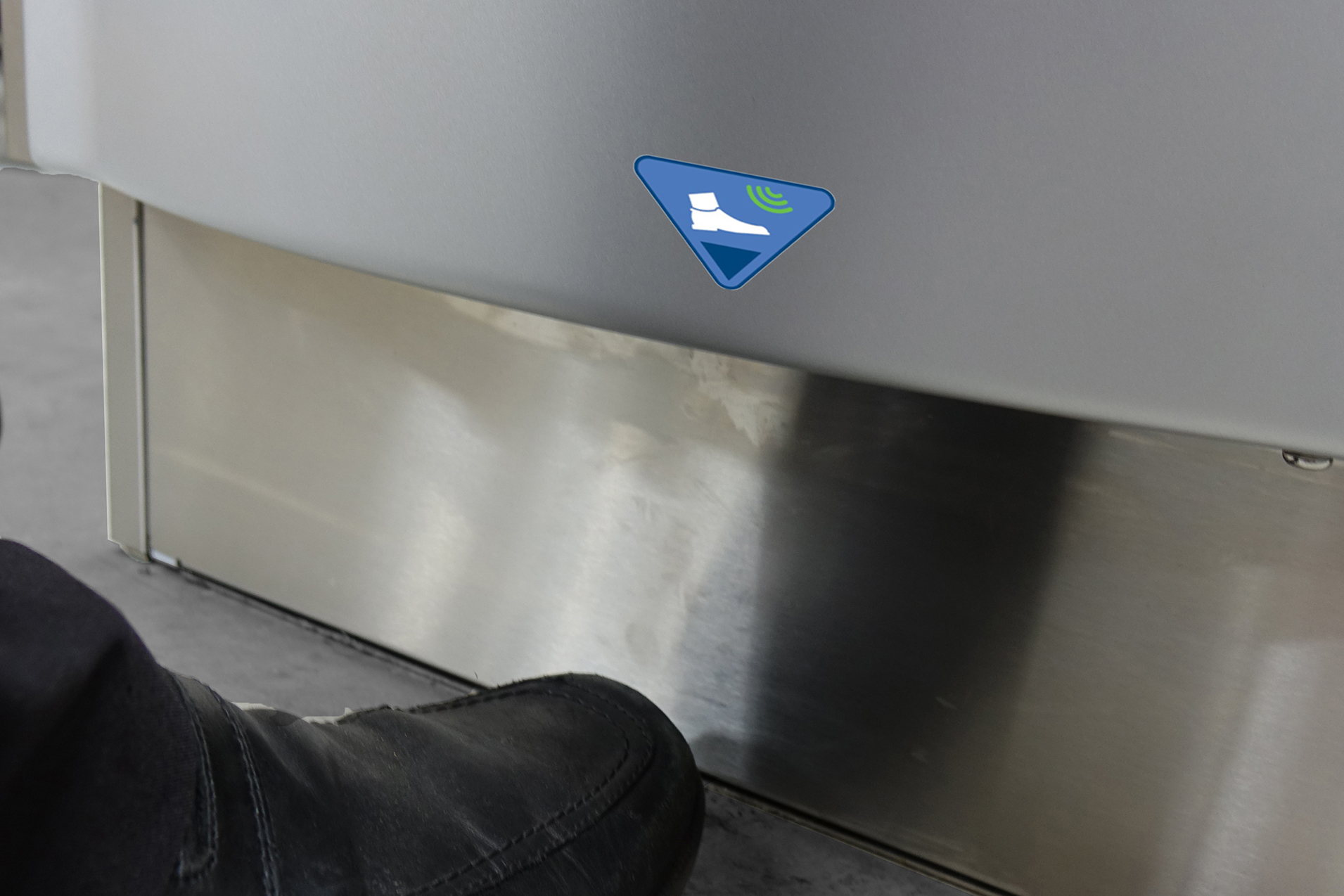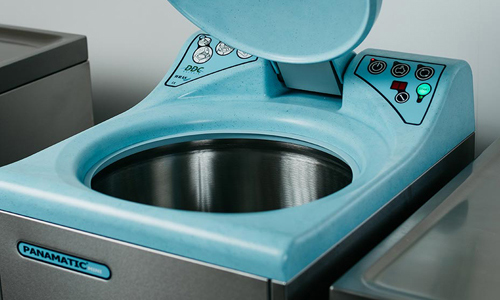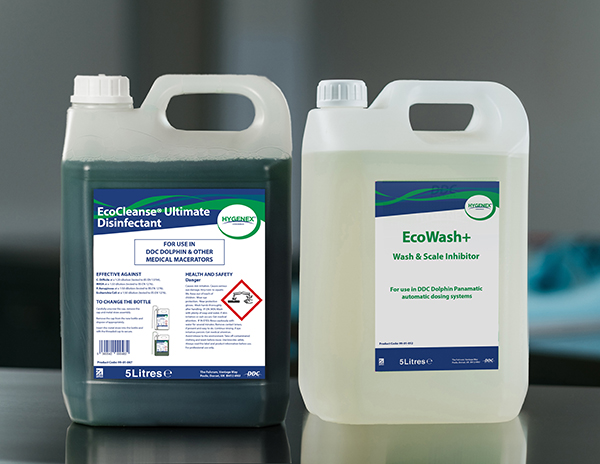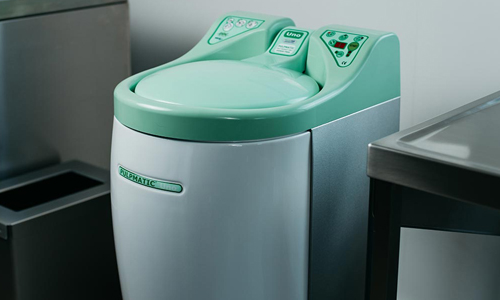The 3 Major HCAIs Which Are Denatured By Your Washer Disinfector
DDC Dolphin washer disinfectors kill 99.99% of known bacteria. Where reusable bedpans are in circulation, their use should be considered essential.
Even in the absence of enzymatic cleaners and detergents, washer disinfectors are effective in eliminating many microorganisms. Using steam to heat its chamber to 80 degrees Celsius, a washer disinfector will maintain this temperature for at least 60 seconds; long enough to denature dangerous pathogens and prevent HCAIs.
The cleaning and disinfection process is intended to make items safe for staff to handle, as well as safe for patients to use. In facilities where toileting aids are rotated between service users, it’s essential that any item containing even a trace of human waste is thoroughly decontaminated; any less meticulous response can leave both clinicians and service users exposed to dangerous infections.
Washer disinfectors use a two-step process to ensure that microorganisms don’t spread to your vulnerable service users.
Processing utensils in a washer disinfector involves two stages; cleaning and microbial denaturing. By creating moist heat which remains on the surface of dirty items for a set period of time, they become fully sanitised, and thus satisfy the A0 requirement of BS EN ISO 15883- 1 for disinfection.
Thermal disinfection, using moist heat, is the most reliable method of decontamination in healthcare settings and should always be the preferred solution for cleaning reusable items such as plastic bedpans and urine bottles.
Any manual method simply can’t guarantee the same reliable result, particularly in terms of maintaining heat and safely containing steam (which could aerosolise bacteria into the air if not properly managed – a washer disinfector will ensure that the bacteria are entirely contained within the machine).
When using a washer disinfector, your facility takes proactive steps to prevent the spread of infection between patients, staff and even visitors. But which illnesses can it prevent?
Here’s the three of the most significant.
1. Norovirus
Norovirus is incredibly easy to spread; so much so, that between 600,000 and a million people are infected in the UK each year. Although not generally fatal, it can cause severe vomiting and diarrhoea; symptoms which are perilous to those who are elderly, infirm or recovering from an existing illness.
The infection spreads through contact with those who are already afflicted, as well as from surfaces that have been contaminated, such as bathroom taps, light switches, or hands. Norovirus can survive for seven days on surfaces, so thorough disinfection is absolutely essential.
When a norovirus outbreak hits your facility, all commode pots and bedpans should immediately be taken to a washer disinfector for cleaning; the heat will safely denature any remaining bacteria, once waste has been flushed.
The clinician should also ensure that their hands are sanitised with soap and water, as well as making sure that any surfaces in the toileting area are clean.
2. Clostridium Difficile
Incidents of clostridium difficile (C. diff) are almost always found in those taking antibiotics, killing the good bacteria which can protect people from developing infectious illnesses.
Unlike norovirus, C. diff is far more likely to be fatal when not properly managed. Serious complications include dehydration, rupture of the colon and spread of the infection to the abdominal cavity; all of which are life-threatening.
Clostridium difficile bacteria is found in faeces. The infection is transferred when people touch contaminated surfaces, and then their mouths.
To avoid this cross-contamination, commode pots and bedpans should always be treated in a washer disinfector. As the steam in the machine is kept above 80 degrees, this sufficiently kills active germs; but not necessarily the spores that spread from vegetative bacteria. These spores can still spread the C. diff bacteria and survive high temperatures for up to two hours, so some extra protection is required.
Alkaline detergent, when combined with a routine washer disinfector cycle, will destroy C. diff spores and help to protect your service users and clinicians from infection.
3. Escherichia coli
Escherichia coli (E. Coli) is found in the intestines of humans and animals and can cause extreme food poisoning when ingested from contaminated foods such as ground beef, unpasteurised milk and other fresh produce.
Although the bacteria can live in the bodies of healthy people with no consequence (or very mild diarrhoea symptoms), some more aggressive strains can cause severe cramps and vomiting.
Although initially contracted from contaminated food, the infection is highly contagious and can spread very easily from person-to-person; a great risk to those in medical facilities, as well as the clinicians providing treatment.
Unlike the extremely aggressive clostridium difficile infection, reusable items that have been in contact with E. Coli infected waste can be successfully handled with thermal disinfection. Even though E. Coli can exist in a hibernation state within more difficult-to-kill forms of bacteria, the heat of the steam in a regular washer disinfector will be sufficient to eliminate any lingering germs from bedpans, urinals and commode pots.

Don’t take risks with your infection control procedures. Contact us today, to see how we can assist in keeping service users safe in your hospital, care home or special needs school.





